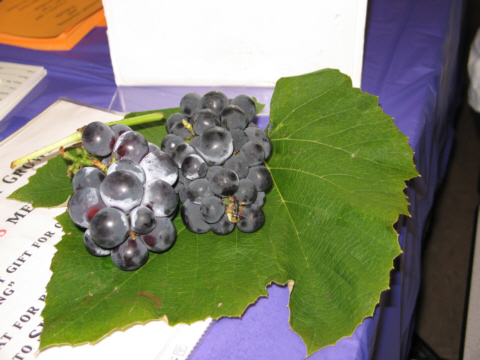
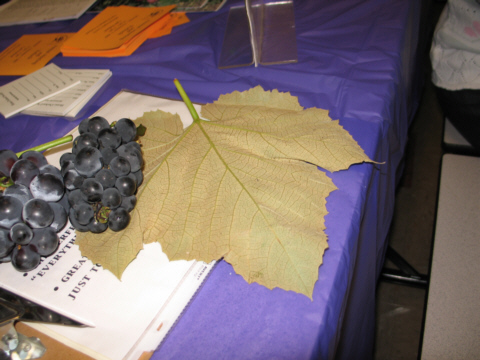
Grapebreeders Home Page
Unknown grape, I.D. needed
Click on the Picture to see the original size.
The bloom isn't as heavy
as it appears in the picture. The grapes were cold and had moisture on them
that reflected the flash,
making the grapes seem to have a heavier bloom than they did.
I went to a meeting of the Home Orchard Society today and, as often happens,
had someone try to get a grape identified. Most of the time they are obvious,
but today an elderly couple brought a real oddity. I'm including the notes I
made, and I have photos. I will send photos to anyone who wants to see them.
If you can help, I'd really appreciate it. This one looks like it requires someone
familiar with the history of the area to get a positive I.D.
"Elderly couple from Onalaska, Washington brought unknown grape to HOS
All About Fruit Show at Alder Creek Middle School, on Webster Road in Milwaukie,
OR 10/12/07
Very large blue-black berries, some an inch in diameter, if not more. Labrusca-vinifera
character, relatively small cluster, very compact. Leaf is exceptionally large,
close to a foot across. Has rusty-brown underside. No sinuses.
Came from elderly neighbor about 10 years earlier. Believed to be at least
60 years old. Fairly late ripening, probably after Concord. Quality is more
vinifera-like than Concord, with little astringency in the skin, relatively
firm flesh that is only partly slipskin."
It doesn't seem to match any of the old Geneva types I know of. The rather small, very compact clusters for one aren't in the style of Geneva. Those monstrously big leaves should be a good clue if I could find anything like that in the references. I'm not entirely sure it isn't a tetraploid.
It's not entirely impossible this grape has aestivalis in it, from the look
of the leaf.
The cluster is similar to Pocklington, but more compact. Not much else matches.
This could have Concord in it, but there is some definite influence from something
else.
Lon Rombough
Comments:
The only one I had that looked remotely like it was Agawam, but the color is wrong---too dark. If it is mature / ripe already in Onalaska, it may not be much later than a Concord after all.
I had a suggestion of McPike, but it definitely has some labrusca in it.
There are a lot of things in your description and Munson's description of Isabella that jive. Cluster size isn't one of them. Maybe its another Isabella seedling.
My Lynden blue grape has small clusters w very large berries as well, but it seems to me a labrusca with little, "if any' other species in the pedigree. No hint of reds or purples--- it goes right from green to blue black.
The longer I read the description of McPike, the more I am inclined to think
it fits the unknown grape. I'll have to get some wood and grow it out, it seems,
just so I can verify it.
I've grown Isabella, and the grapes --at least in MO-- are quite black. And the leaves are prettier than that.
From " The Grapes of New York"
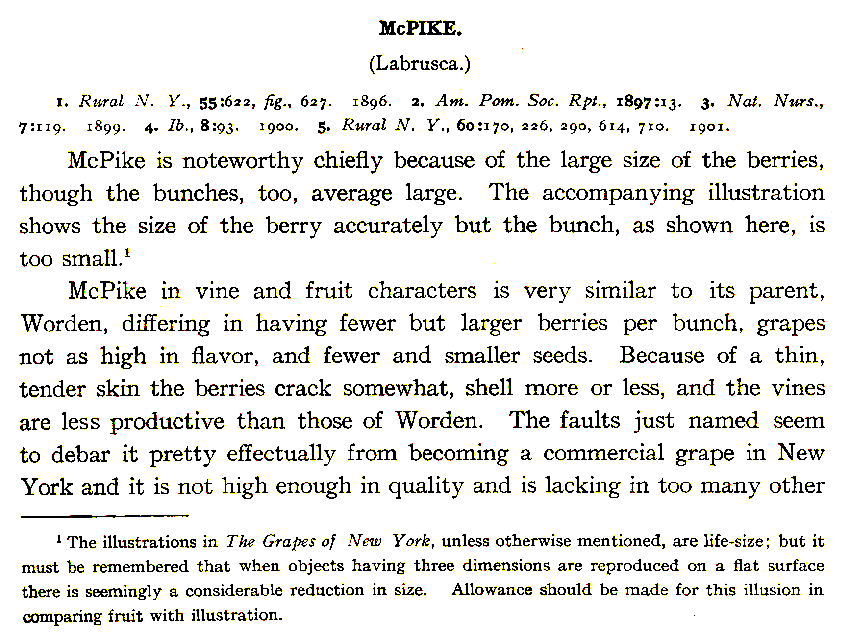
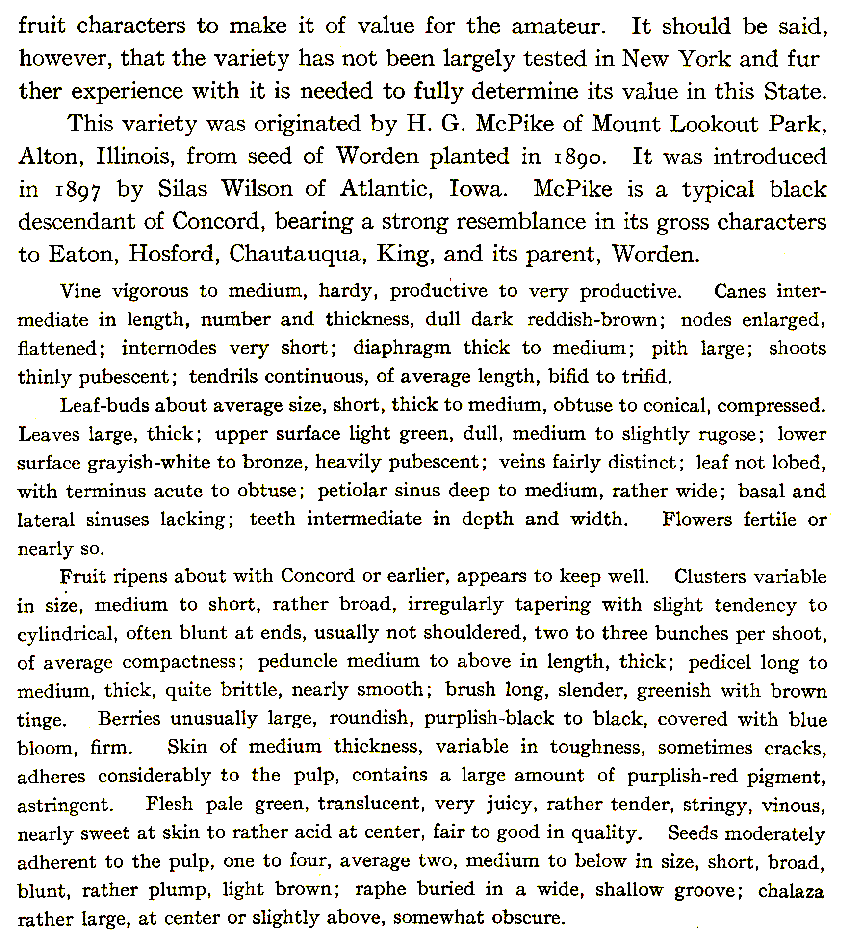
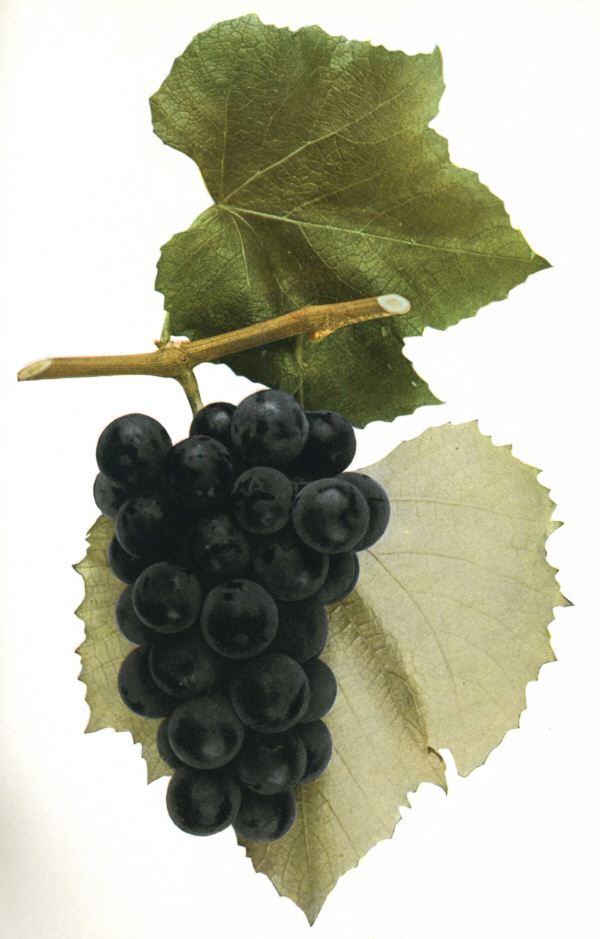
Picture of McPIKE grape
Editor Soeren Larsen